
Gepubliceerd op 8th May 2018
Gewijzigd op 17th Nov 2025
Wat is het verschil met craqueleren in een opaal?
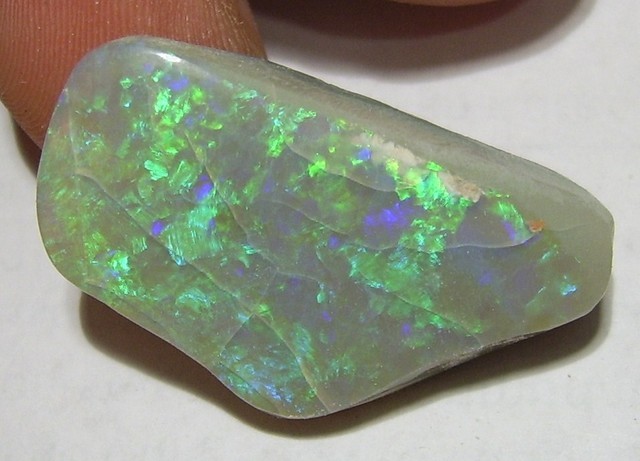 Veel opaalslijpers verkopen stenen met barsten of craquelé in hun opalen. Er is een groot verschil tussen de twee en wij laten u zien wat dat is. Hoewel er niets mis is met het kopen van een opaal met craquelé of barsten, is het belangrijk dat u de koper hiervan vóór de aankoop op de hoogte stelt. Als uw opaal breuklijnen of craquelé vertoont, mag u hem niet in een ultrasoonreiniger doen, aangezien dit de opaal kan beschadigen.
Veel opaalslijpers verkopen stenen met barsten of craquelé in hun opalen. Er is een groot verschil tussen de twee en wij laten u zien wat dat is. Hoewel er niets mis is met het kopen van een opaal met craquelé of barsten, is het belangrijk dat u de koper hiervan vóór de aankoop op de hoogte stelt. Als uw opaal breuklijnen of craquelé vertoont, mag u hem niet in een ultrasoonreiniger doen, aangezien dit de opaal kan beschadigen.
SCHEUREN

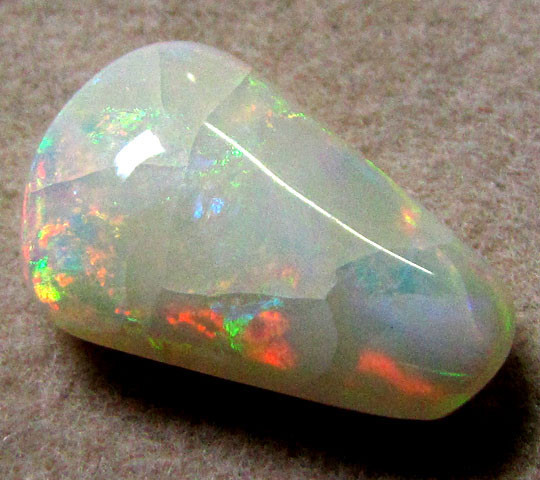
Een scheur kan een kleine of grote breuklijn zijn. Deze kan zich aan de oppervlakte of inwendig bevinden. Als je een lijn in de opaal ziet en deze licht reflecteert, dan is het een scheur in de steen. Uitwendige scheuren zullen de waarde/prijs meer verlagen dan inwendige scheuren.
Interne scheuren blijken stabiel te zijn en niet verder te groeien. Sommige opaalmijnwerkers hebben stenen met scheuren erin die geen beweging hebben gehad. Externe scheurlijnen in een gepolijste opaal kunnen worden weggesneden, maar dit vermindert uiteraard de grootte en waarde van de opaal.
Gebarsten opalen betekenen niet per se dat ze uit elkaar vallen. Veel gebarsten opalen blijven goed, maar het grootste probleem is dat als een opaal gebarsten is en in een ring zit, de opaal door dagelijkse slijtage en stoten zal breken. Veel gebarsten opalen worden om deze reden als hanger gezet en kunnen bijna altijd gedragen worden.
haarscheurtjes
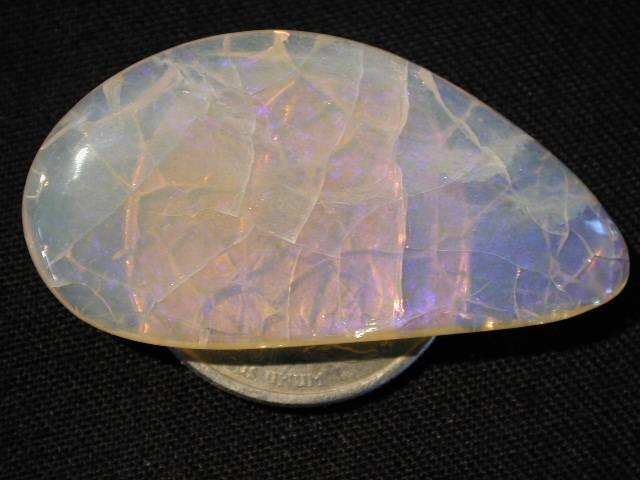
Craquelé ziet eruit als meerdere scheurlijnen. Craquelé opaal wordt meestal bewaard als specimen of verzamelobject. Het gebruik ervan in sieraden wordt afgeraden. Craquelé opaal kan behandeld worden met Opticon, wat de opaal stabiliseert.

De afbeelding hierboven toont een Ethiopische opaal met een insluiting. Let op: er is geen lichtreflectie.
Insluitsels zijn geen scheuren. Veel opalen bevatten natuurlijke insluitsels. Dit kunnen luchtbellen, vegetatief materiaal en zelfs kalk zijn.
AUSTRALISCHE OPAAL
De meeste Australische opalen zijn zeer stabiel, waarbij zwarte opaal [N1] als de meest stabiele wordt beschouwd vanwege de kleinere moleculen. Australische opalen die een scheur vertonen, hebben doorgaans een waarde van 10-20% van die van stabiele opalen van vergelijkbare kwaliteit. Naar schatting scheurt slechts 1-3% van de Australische opalen, maar sommige opaalvelden zijn gevoeliger dan andere.
De meeste Australische opalen bevatten 3-5% water. Over het algemeen geldt: hoe dieper de mijnwerker graaft, hoe meer water de opaal zal bevatten. Mijnen bij Lighting Ridge gaan tot ongeveer 30 meter diep en de mijnwerker kan inschatten hoe stabiel de opaal is. Als de potch verandert van hard, droog materiaal naar zompig, nat materiaal, is dat een indicatie van stabiel materiaal. Wanneer ze dieper graven, weet de mijnwerker dat deze opaal vanzelfsprekend meer water zal bevatten.
De meeste Australische opalen zijn niet-poreus en absorberen daarom geen water.
POTCH-LIJNEN

Sommige opalen kunnen aders of spinnenweblijnen vertonen. Dit zijn geen scheuren, maar potchlijnen. De steensnijder kan dit eenvoudig controleren, aangezien scheurlijnen licht reflecteren, maar potchlijnen niet. Potchlijnen verlagen de waarde van de opaal, afhankelijk van de scherpte van de lijnen. Ze hebben over het algemeen geen invloed op de stabiliteit van de opaal.
ETHIOPISCH OPAAL
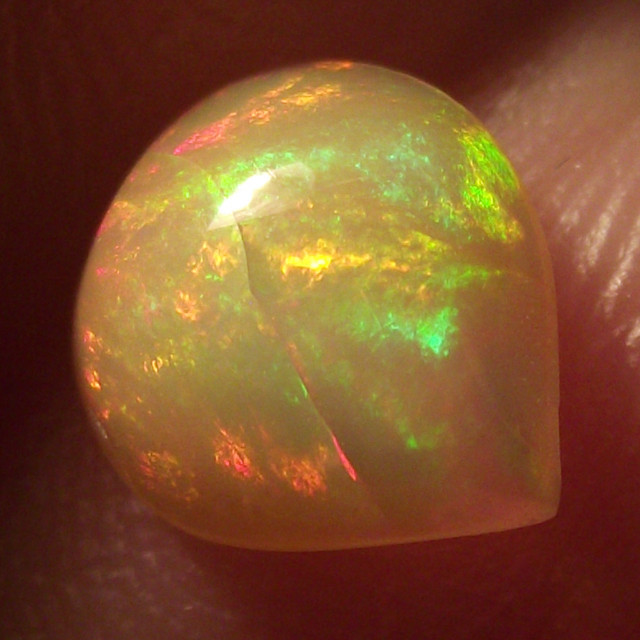

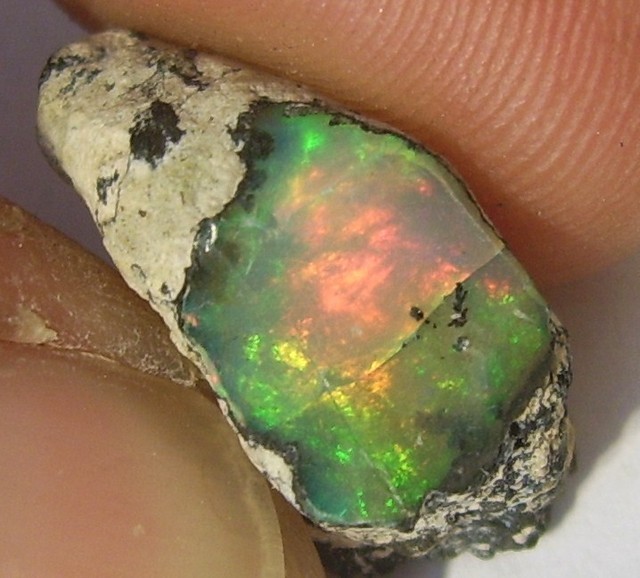
Ethiopische opaal is een hydrofaanopaal . Hydrofaanopaal absorbeert water. Wanneer Ethiopische opaal gedehydrateerd is, is de basis ondoorzichtiger. Wanneer de opaal gehydrateerd is, wordt hij transparanter. De overgangstijd van gehydrateerd naar gedehydrateerd kan variëren van minuten tot dagen, maar de meeste opalen verlopen binnen een paar uur.
BREUKTEST ETHIOPISCHE OPAAL
Edelstenen worden al eeuwenlang gebroken of gespleten om de scheurbaarheid of splijting van ruw materiaal te testen. Alle grote snij- en slijpcentra testen het materiaal op breuk voordat ze worden gesneden of gesneden.
Zelfs voordat moderne testtechnieken waren uitgevonden, werd ruw materiaal al getest. In de winter werd een kamer verwarmd met een houtvuur en werd er herhaaldelijk koud water op het ruwe materiaal gespat.
Tegenwoordig wordt dit basisproces nog steeds gebruikt voor opalen: de opalen worden in water geweekt en gedroogd in een warme, maar niet hete omgeving. Dit proces kan meerdere keren worden herhaald voordat het slijpproces begint. Sommige opalen met een kleine scheurlijn kunnen soms onder water uitzetten.
Dit proces test de spanningspunten en er zullen scheuren ontstaan op het zwakste splijtpunt. De opaal is nu klaar om te worden gesneden en gepolijst om eventuele zichtbare scheuren te verwijderen.
Breuken, haarscheurtjes en barsten kunnen zich als volgt voordoen:
- korrelige suikerpatronen
- gladde, gelijkmatige breuken
- ruwe randen onregelmatige breuken
Snijders beslissen uiteraard pas om een opaal te snijden nadat deze is getest op breuk, om te zien aan welke kant van de opaal de breuk optreedt. Dit vereist grote vaardigheid en een professionele snijder snijdt volgens de aanwijzingen die zichtbaar zijn wanneer de breuk voltooid is.
Het kost een slijper jarenlange ervaring om de beste aanpak voor het slijpen van een opaal te begrijpen. Meesterslijpers rekenen een percentage slijpkosten van 3 tot 5% voor topstenen, en in de meeste gevallen is dit de moeite waard!
OPTICON STABILISATIE
Opticon is de meest gebruikte vorm voor het stabiliseren van opaal. Dompel de stenen onder in een weckpot gevuld met voldoende Opticon om de stenen te bedekken en draai het deksel goed dicht zodat er geen water kan ontsnappen. Condensatie kan de hars troebel maken.
- Plaats de pot in een gewone slowcooker, gevuld met zoveel water dat de pot niet meer gaat drijven.
- Verhoog de temperatuur naar 150-170 graden Celsius (302-338 Fahrenheit)
- Gebruik een thermometer om de temperatuur te controleren. Wij raden aan een keukenvleesthermometer te gebruiken.
- 24 uur koken
- Zeef de overtollige hars eraf en leg het op aluminiumfolie
Gebruik een vacuümmachine zoals die voor het vacuüm zuigen van voedselzakken. Hiermee zuig je de lucht uit de zak.
- Stofzuig minimaal een uur lang.
- Gebruik een kwast om de steen te beschilderen met een zwak mengsel [40 op 1] van hars en harder en stofzuig het opnieuw gedurende 15 minuten.
- Verwijder overtollig vocht met een acetondoekje.
- Als de stenen niet meer plakkerig zijn, polijsten of opnieuw polijsten
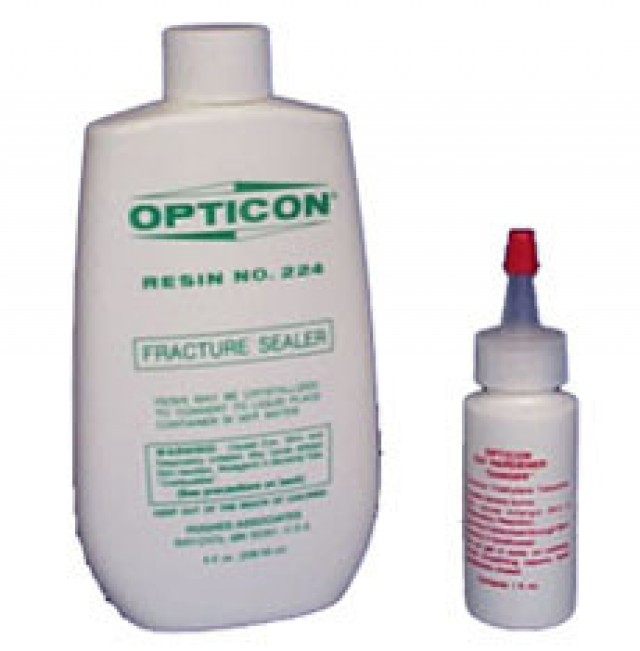

Deze 54,7 karaat Harlekijn-opaal werd verkocht voor meer dan $ 1.100. Toen hij 5 jaar geleden werd geslepen, vertoonde hij craquelé lijnen. De eigenaar behandelde de steen met Opticon en verkocht hem voor ongeveer 10% van de waarde als hij onbehandeld was gebleven.
LIJMEN
Je kunt de steen ook insmeren met secondelijm en hem verwarmen onder sterke lampen. De glasachtige laag over de steen zorgt voor stabiliteit tijdens het polijsten.
BOULDER OPAAL
Boulderopaal wordt meestal gevormd op een ijzersteenondergrond en is stabiel. Deze ijzersteen kan een diepbruine chocoladekleur hebben tot een zanderige ijzersteen met een lichtbruine kleur. IJzersteen helpt de opaal stabiel te houden. Er kunnen enkele scheurlijnen verschijnen bij een hoek van 45%, maar de opaal kan nog steeds stabiel zijn. Sommige kristalopalen kunnen ook scheuren vertonen. Koroit- en Yowah-opaalvelden worden als stabiel beschouwd.
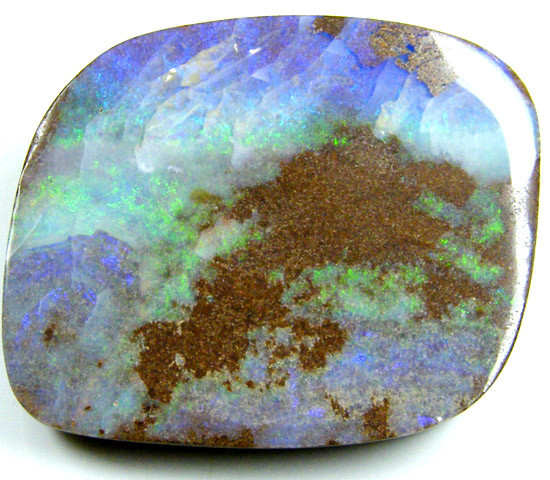

MEXICAANSE OPAAL
De meeste Mexicaanse opalen zijn stabiel. Craquelé of gebarsten opalen kunnen ontstaan wanneer de potch en opaal in één stuk worden gesneden, omdat ze elk een andere drukgrens hebben.


USA OPALEN
Amerikaanse opalen worden over het algemeen niet als stabiel beschouwd en opalen worden meestal in drietallen of gestabiliseerd geproduceerd. Amerikaanse opalen hebben de neiging om te craqueleren, omdat het watergehalte kan oplopen tot 14%.
BRAZILIAANSE OPALEN
Deze worden over het algemeen als stabiel beschouwd, omdat het watergehalte meestal minder dan 5% bedraagt. De opalen zijn semi-transparant tot wit doorschijnend.
HONDURESE OPAAL
Honduras opaal op matrix wordt als stabiel beschouwd, maar sommige kristallen die op de matrix worden gevormd, kunnen scheurlijnen vertonen
Bekijk onze opalen
Zoek de Opal Encyclopedia
Gerelateerde veilingen
gerelateerde artikelen
Boulder Opaal is een van de meest ondergewaardeerde opalen op de markt. Leer meer over deze unieke opaal en bekijk de prachtige stenen die we te koop aanbieden.
29th May 2019
Met hun passie voor opalen richtten Wayne en Estella Sedawie Opal Plus meer dan 14 jaar geleden op en ontdekten dat internet een waardevol hulpmiddel is. Het is de plek waar de meeste internationale transacties van het bedrijf plaatsvinden.
17th Oct 2018
Laatste artikels
Black opals are the most sought-after opal variety, with deep bases lending a rainbow of reflections on top. Discover the uses, properties, history, and value of black opals!
7th Dec 2025
Ontdek hoe opalen worden beoordeeld en welke factoren hun prijs beïnvloeden. Van kleur en helderheid tot slijpvorm en oorsprong, leer hoe elk type opaal wordt gewaardeerd - met voorbeeldprijsklassen.
19th Jul 2023
Ga mee op reis en leer over de helende kracht van opalen van onze gastschrijver Vivien Schapera van Crystal Healing Techniques!
20th May 2023
Artikelcategorieën
All there is to know about Opals including Black Opals, Ethiopian Opals & Boulder Opal
14 Artikelen
Check out our fascinating information and articles on all things amazing in the Opal world
41 Artikelen
Opal Auctions sellers who are approved as opal Verified Sellers
4 Artikelen





![OPAL IN SHIN CRACKER-NATURAL LOOK-[EJP23] 1.69 CTS](https://liveplatforms-production.b-cdn.net/tenants/oa/uploads/images/55000-59999/56219/23a.jpg?width=480&aspect_ratio=1001%3A1000)
![OPAL IN SHIN CRACKER-NATURAL LOOK-[EJP16] 4.31 CTS](https://liveplatforms-production.b-cdn.net/tenants/oa/uploads/images/55000-59999/55996/16.jpg?width=480&aspect_ratio=1001%3A1000)
![GEM OPAL IN SHINCRACKER [ AC146 ] 10.45 CTS](https://liveplatforms-production.b-cdn.net/tenants/oa/uploads/images/25000-29999/27532/db6ad38c38487f213623b19720351dfb.jpg?width=480&aspect_ratio=1001%3A1000)
![GEM OPAL IN SHINCRACKER [ AC143 ] 5.54 CTS](https://liveplatforms-production.b-cdn.net/tenants/oa/uploads/images/25000-29999/27528/4ce93be559a65b7c0a109652fff9ff24.jpg?width=480&aspect_ratio=1001%3A1000)